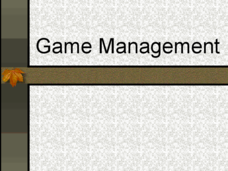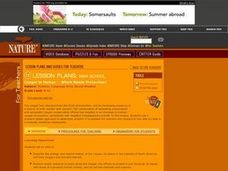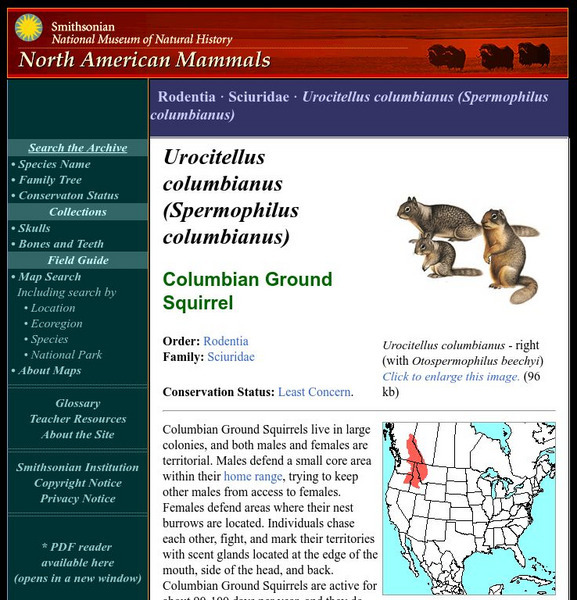National Park Service
Leave it to Beavers
Many people know cats mark their territories by rubbing the back of their necks to leave a scent, but not many people know beavers also leave a scent to mark their territories. During the first activity of two, scholars use their noses...
Curated OER
Game Management
Many factors that lead to conserving wildlife are covered on these slides. The meanings and definitions are clear, and the specific topics covered are relevant and complete. This slideshow would be very useful to include in a...
Curated OER
Habitat Awareness
Second graders build a habitat. In this wildlife activity, 2nd graders work in groups to build a mammals habitat. They share their habitat with the class.
Curated OER
Cougar or Human: Which Needs Protection?
Students conduct Interned research on the cougar, listing perceptions about cougars, and facts about cougars. They view a video, take notes during the video, and organize presentations to present their findings.
Curated OER
South African Trivia
In this South African Trivia learning exercise, 6th graders research and answer questions about South Africa. Students write fifty-five answers.
Curated OER
Wildlife Habitat
Students explain what a habitat is and describe its four elements. They see how an area's habitat suitability varies with different species of wildlife. They name factors that affect habitat suitability.
Curated OER
Rain Forest Animals
Young scholars create a book about animal species found only in the Amazon rain forest. They find one species to represent each letter of the alphabet, and write each name on a different piece of paper. They illustrate each page with an...
Smithsonian Institution
National Museum of Natural History: American Mammals: Columbian Ground Squirrel
Columbian Ground Squirrels live in large colonies, and both males and females are territorial. Males defend a small core area within their home range, trying to keep other males from access to females. Learn more about the Spermophilus...







